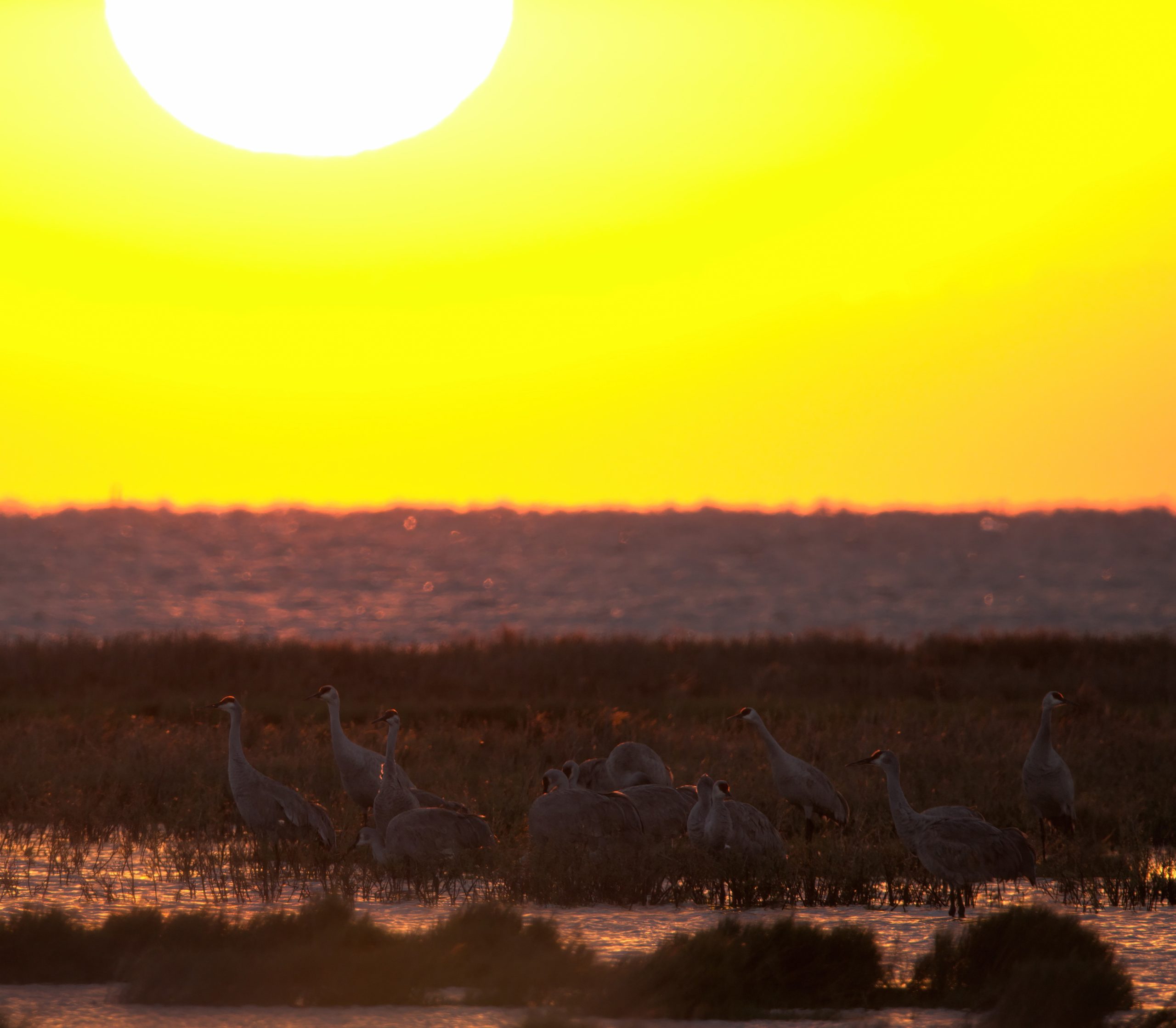Texas Shorelines: Spring Migration Is Here!
COLLEGE STATION, Texas — While you may think you have to travel to distant countries and remote habitats to see wildlife in action, all you really need to do is look out your window. The vast and vibrant world of birds can be enjoyed anytime, anywhere.
Apr 19, 2023 By Alli Dickey
3 minutes
 Sandhill cranes pose against the sunrise at Aransas National Wildlife Refuge.
Sandhill cranes pose against the sunrise at Aransas National Wildlife Refuge.COLLEGE STATION, Texas — While you may think you have to travel to distant countries and remote habitats to see wildlife in action, all you really need to do is look out your window. The vast and vibrant world of birds can be enjoyed anytime, anywhere.
Texas is home to 640 species of birds and has some of the richest terrestrial birding in the country. According to Texas Birding, 67 percent of all U.S. bird species use the resources of the Texas Coast.
Along 370 miles of coastline, you can find wetland species like the great blue heron, snowy egret and roseate spoonbill. On the beach, you’ll see shorebirds like the sanderlings, sandpipers, plovers and the American oystercatcher. Or, you can snag a quick glimpse of nimble hummingbirds, diving belted kingfishers and powerful ospreys. The tallest bird in North America and the most endangered crane species in the world, the whooping crane, spends its winters at Aransas National Wildlife Refuge near Rockport.
But the real fun begins in April when millions of colorful birds take to the Central Flyway to migrate north through Texas. Among the flock are hummingbirds, flycatchers, swallows, thrushes, vireos, orioles and the most popular: the warblers. Warblers are small songbirds that come in stunning colors and sing unique songs. Texas has 54 species of warblers pass through.
These migrators spent their winter vacationing in Central and South America. Some of them fly nonstop across the Gulf of Mexico, up to 600 miles. The Texas coast is their first stop in the U.S. for food and rest. They don’t stay for long. Within a few weeks, the birds will fly thousands of miles up to Canada to breed.
While birds have made the journey for hundreds of thousands of years, only recently did the birding movement skyrocket in popularity. In 2020, birdwatchers set a global birding record during the annual Global Big Day. Businesses that sell bird feeders saw a 50 percent increase in sales. Wikipedia bird pages doubled in traffic.
Why is birding so popular? It doesn’t matter if you’re an ornithologist, bird enthusiast or someone who just likes to be outside; anyone can enjoy birding.
“Just have patience. Wait for something amazing to happen,” said Pat Cruz, Aransas County marine extension agent and owner of the BestBirdShots photography hub.
If you’re looking to get started, all you need is a guide and some binoculars. Download Cornell Lab of Ornithology’s Merlin app for quick identification and eBird to log your species. Every single observation in eBird contributes to a citizen science database that researchers use for bird discoveries.
The Great Texas Coastal Birding Trail connects the best birding spot along the 370 miles of coastline. Find the hotspots near you, and see what you’ll discover.
Other Resources:
tpwd.texas.gov/state-parks/parks/things-to-do/birding-in-state-parks
tpwd.texas.gov/huntwild/wild/birding/migration/faq
mailchi.mp/cornell/news-release-birdwatchers-break-records-on-global-big-day-1317584
audubon.org/birding/how-to-start-birding
tpwd.texas.gov/publications/pwdpubs/media/pwd_bk_w7000_0534.pdf
texasseagrant.org/person/pat-cruz/
Photo Caption:
Sandhill Cranes pose against the sunrise at Aransas National Wildlife Refuge. Photo by Nick Friedeman.
####
Texas Shorelines is a service of the Texas Sea Grant College Program at Texas A&M University. Texas Sea Grant is a unique partnership that unites the resources of the federal government, the State of Texas and universities across the state to create knowledge, tools, products and services that benefit the economy, the environment and the citizens of Texas. It is administered through the National Oceanic and Atmospheric Administration and is one of 34 university-based Sea Grant Programs around the country. Texas Sea Grant is a non-academic research center at Texas A&M University. The program’s mission is to improve the understanding, wise use and stewardship of Texas coastal and marine resources.
